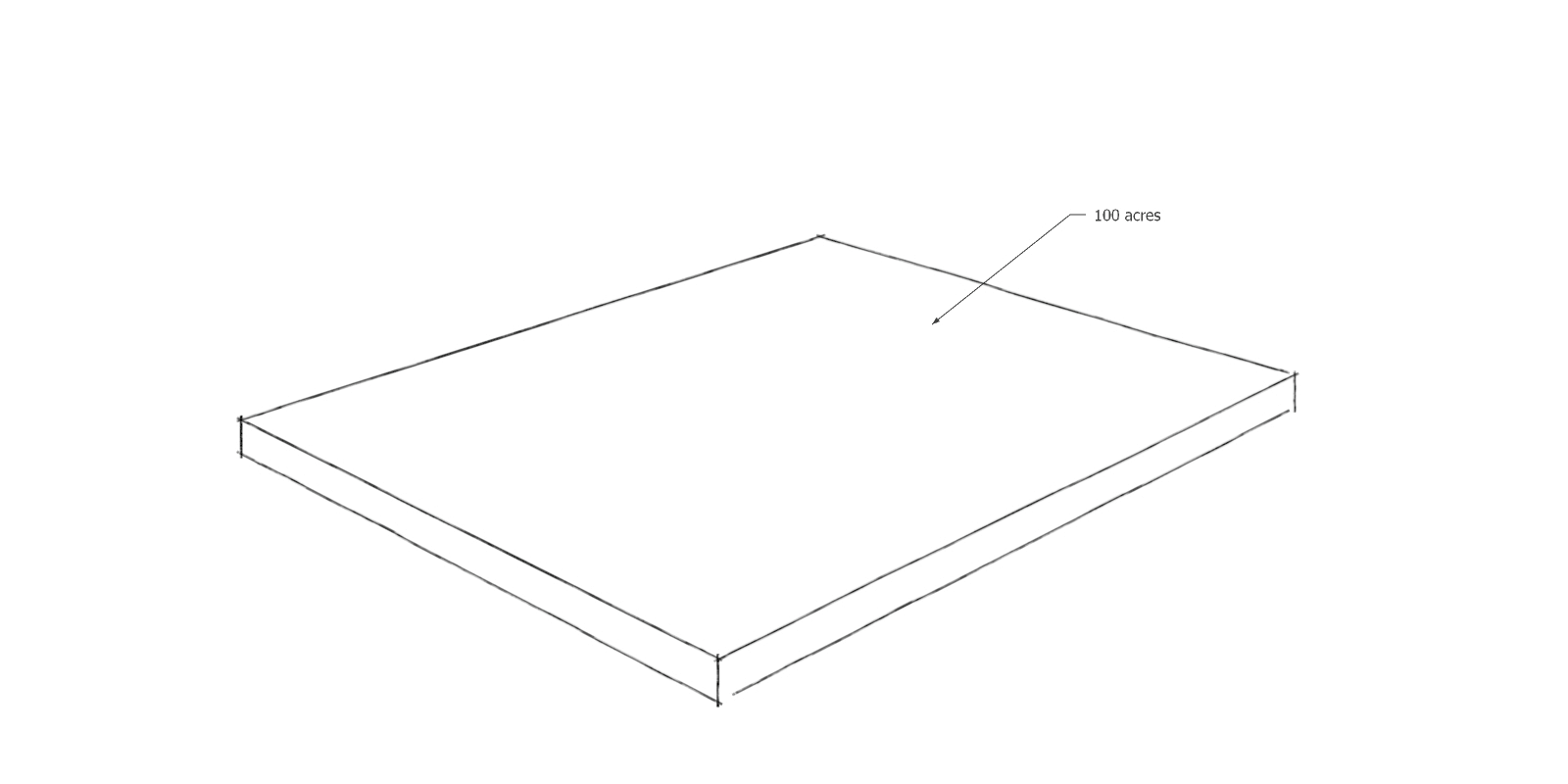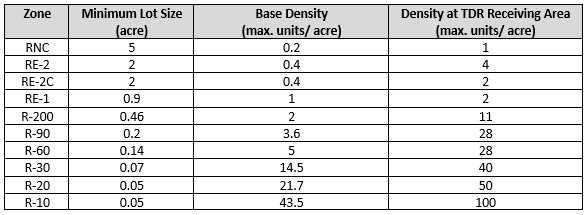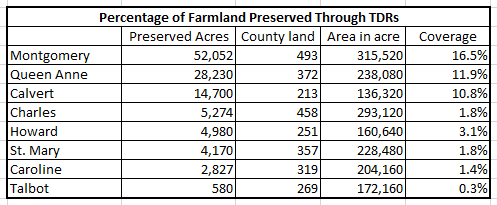National Farmland Development Trend
Urban sprawl is not news, and so is the loss of farmland. At first glance on the 2022 Farms and Lands Summary, the average farm size appeared to have grown by 13 acres. Yet, the number of farms decreased by 100,000. In other words, over the last decade (2012–2022), 21.2 million acres of farmland have been lost nationwide. That is equivalent to losing 242 acres per hour.
Many places have taken action on farmland protection by establishing zoning mechanisms to help reduce farmland loss and promote agriculture and the rural landscape.
What is Agriculture Reserve?
Understanding the Agriculture Reserve’s role is essential before diving into the Transferable Development Rights. Agriculture Reserve is the only classification under the Agricultural Zone. The zone was designated to conduct “The business, science, and art of cultivating and managing the soil; composting, growing, harvesting, and selling crops, and the products of forestry, horticulture, and hydroponics; breeding, raising, managing, or selling livestock.”
The planning authorities intended to establish Agriculture Reserve Zone to prevent further loss of farmland. This zone sets Agriculture as the primary use; thus, it can preserve a large area of farmland and provide contiguous properties suitable for agriculture operations and their related use.
What Is a Transferable Development Right (TDR)?
Transferable Development Right is a growth management tool in the land planning discipline. This Transferable Development Rights (TDR) program was designed to compensate landowners a reserve zone for transferring residential development potential from preservation areas into better-suited areas for future growth.
The benefit of a TDR program versus a government purchase development rights (PDR) method is that the dollar for a PDR program is often funded through taxation or financing guarantee. But the TDR program is paid for by the private sector.
TDR program in Montgomery County
In 1980, Montgomery County made one of the most significant land-use decisions to conserve 93,000 acres of farmland by creating the Agricultural Reserve, which set the built density at one dwelling unit per 25 acres.
When the density of a preservation area was set, the Transferable Development Rights program was also created, which reversed the density (right) from one house per 25-acre farm to one per 5-acre farm. Since every 25 acres of farmland within the AR zone can only have one dwelling unit, the landowner can sell the additional TDR to developers who can use these rights at higher density elsewhere in the county.
For example, an owner who owned 100 acres of land would have 20 development rights. If the owner only wants to keep one right to develop their residential unit, the owner could sell the other 19 rights; if the owner intends to develop four dwelling units as the Agriculture Reserve zone was initially regulated (one dwelling per 25 acres). The owner then can sell the other 16 rights elsewhere.
Typically, there is a maximum density cap at the development right-receiving area. The maximum number of units per acre that may be built through the purchased TDRs can be found in section 4.9.18 in the county zoning ordinance.
Per Section 4.9.18 under montgomery county zoning ordinance 59-4, it states the maximum number of units per acre may be built under TDR overlay zone.
What’s next
The TDR mechanism, in general, has the following features embedded in its local program:
Incentives for landowners to sell development right
Demand for bonus density in the growth area.
TDRs are the predominant method for acquiring additional density.
TDR program moves development right from rural to the growth area.
When looking at the 2016 committee report for the Maryland Department of Planning, Montgomery County appeared to have preserved twice much land as Queen Anne County across the Chesapeake Bay. On the other hand, when we take the TDR program preserved-farmland coverage, Montgomery achieved 5% to 15% more than other counties.
Original data from this table was derived from “Findings: Acres preserved through TDR” (page 14) in the 2016 Committee report for the Maryland Department of Planning.
The driving force to achieve the success of any TDR program is the demand for a local housing market. Without a capable market desiring development in the receiving area, the TDR program will not be viable even with a higher development right conversion. (see Calvert County for an example.) At the TDR receiving area, we must also be mindful of the green area ratio and parking space per unit so the growth of neighborhoods can evolve sustainably in the long run.
Notes and References:
"Farms and Land in Farms 2022 Summary" by USDA (February 2023) Farmland information before 2015; please refer to Farms and Land in Farms 2020 Summary.
Agricultural Reserve (AR): According to zoning 59-4.2.1, it is a type of zoning district. Agriculture and its related activities are preferred in the agricultural reserve zone. Residential development is limited to one dwelling unit per 25 acres.
From 1978 to 2017, the number of farms in Maryland has kept relatively stable (from 667 farms in 1978 to 558 in 2017), and the farm size has become more homogenous. The percentage of mid-size farms (10-49 acres) has increased from 14.9% in 1978 to 46.2% in 2017. Please refer to the source of the farm size: the Census of Agriculture 2017 full report, Maryland.
The “2016 Transfer of Development Rights Committee Report in Maryland” can be downloaded on this page.
Calvert County is an example of whether higher development right conversion does not necessarily leads to an incentive to purchase TDRs from a receiving area. In Calvert County, the on-site density at the sending area is one unit per 20 acres, and can sell the development right based on a one-unit-per-acre calculation, which allows landowners to sell 20 times more right than they can build on their lot.
To learn more about Farmland Preservation Goals, visit the Montgomery County Office of Agriculture.








